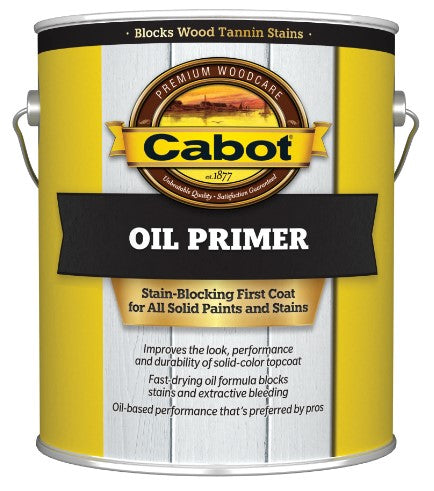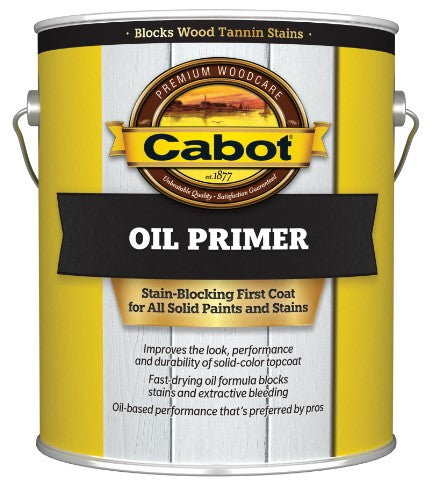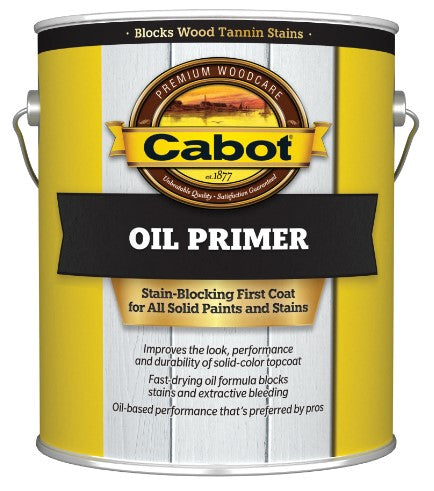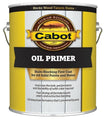Coverage
On smooth surfaces, approximately 400-500 square feet per gallon; on rough surfaces 150-250 square feet per gallon. These rates will vary depending upon the porosity of the surface.
Where to Use
Cabot Problem-Solver Primer is recommended for use on extractive-prone wood species such as red cedar, redwood, mahogany and fir. It is also excellent when applied to pine, cypress, spruce, and even pressure-treated wood. This product has exceptional adhesive properties and can be applied immediately to new, dry, unseasoned, mill-glazed (smooth) siding.
Preparing Your Surfaces
Proper surface preparation is the key to maximum finish performance. The durability of this product can be impaired by an unsound or poorly prepared surface. It is very important that the surface be clean of all dirt, mildew stains, loose wood fibers and other foreign matter. Surfaces must be structurally sound and absolutely dry. (Moisture content must be below 15%, or the wood must be exposed to dry weather for a minimum of 3-5 days.) Any existing moisture problems must be corrected before Cabot Problem-Solver Primers are applied. Previously painted/stained or weathered wood surfaces must be either sanded, scrubbed with a bleach/detergent solution of Cabot Problem-Solver Wood Cleaner and a stiff bristle brush, or power washed to remove the surface layer of all loose stain, paint, wood fibers, dirt, mildew stains, chalky residue and other foreign matter. Use Cabot Problem-Solver Wood Stripper to help remove oil-based finishes from wood surfaces such as cedar, redwood, pine, cypress, fir, and pressure-treated wood. Use Cabot Problem-Solver Wood Brightener to easily remove tannic acid (extractive) bleeding, nail and metal rust stains, and renew the wood's appearance. New wood, once dry, should not be allowed to weather. Short-term (4 weeks) weathering prior to application of this product can decrease its service life.
Application
Apply evenly with a brush or spray. Best results can be obtained by using a high-quality natural bristle brush. When spraying, immediately backbrush after each section is coated to ensure proper penetration. To avoid lap marks, start at one edge and follow through to the end of the boards. Apply primer to small sections at a time.
Cleanup and Disposal
Oil-based Products: Clean brushes and equipment with mineral spirits. Dispose of empty cans or unused portion in accordance with local, state and federal regulations. Close container when not in use. Danger: Rags, steel wool or waste soaked with this product may spontaneously catch fire if improperly discarded. Immediately after each use, place rags, steel wool or waste in a sealed, water-filled metal container.
Water-based Products: Clean brushes and equipment with soap and water. Dispose of empty cans or unused portion in accordance with local, state and federal regulations. Close container when not in use.










